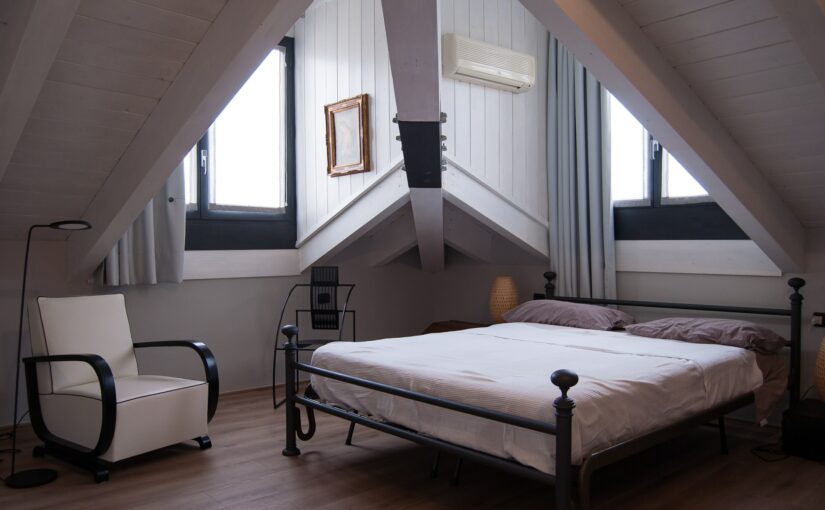Your growing family needs more space, and you may quickly consider converting your basement or garage into a bedroom. But are you aware that your attic has more potential to become a unique room?
You may think that it is a daunting task to plan an attic conversion because you need money and time to make it happen. However, with proper planning, you can have your new bedroom with minimal stress. Here are some steps to help you:
1. Building Code and Permits
An attic conversation may require a building permit during the planning stages. A building code has several safety standards that ensure the stability and safety of your house. It includes considerations about the ceiling height, width, and total square footage of the room. Your proposed bedroom must meet the building code requirements, especially if you plan to lease or sell it later in the future.
You can check with your local government unit to know if your attic conversion needs a permit. You must bring the completed plans for a quick and accurate answer. If you are adding windows or changing the roofline, you will need to obtain a permit first.
2. Angled Ceilings
The steep slope ceiling can be a problem when you decide to convert your attic into a bedroom because it limits the usable space and blocks any headroom. You can solve this issue by putting a unique piece of architecture to highlight the elements, such as using ceiling treatments. You may add a design by painting it using an eye-catching color or use paneling on the angles with molding. You can prefer to create a textured wall by painting over the molding to add visual interest.
3. Walls
Your attic bedroom will not have more wall space than your other rooms because of the steep ceiling angle. You may try using wall treatments by adding an extra interior wall. If you have a smaller space, you may try light colors to make the room look larger and more open. A more polished finish is also feasible by having faux panels with molding.
You can build shorter closets to maximize small areas and gain valuable square footage. Taller walls can match the angle and meet the ceiling, but it can be challenging to find furniture that will fit. You may prefer to have custom-made storage to correspond to the unconventional space. You can add shelving units into the walls to keep clutter off the floor.
4. Windows
Your window design must fit your space because a standard small window may not be enough for it to reach its full potential and make the space livable. You may opt for an easily accessible larger window that meets the building code. It has to be accessible and serve as an emergency exit in case of fire.
Windows also offer natural light, which helps your room look larger and brighter. You may prefer skylights because they provide a natural fit into a roofline and provide added headroom. The Dormer window extends from a sloped roofline for small nooks. It creates a dynamic element to the exterior, and you can add a desk or bench that also serves as a storage unit.
5. Floors
Flooring is essential in your bedroom conversion, but you must check that your floor has a structurally sound and robust surface. You can consider the amount of weight and movement that your flooring must accommodate when you transform the attic into a bedroom. Reinforcing the floor joists can make the flooring safe.
Hardwood floors may be suitable for other rooms in your house, but for the attic bedroom, a carpet can be your best bet because of its soundproofing benefits. You don’t want to create a lot of noise below that will disturb other family members. Carpets absorb sound and require an additional layer of subflooring to eliminate the noise from below.
6. Stairs
Many attics have ladders because their original intention is for storage areas. If you convert it to a bedroom, you may need to build a staircase because ladders are not stable and unsafe for everyday use. A conventional stair is more reliable than a ladder but occupies more floor space below. You may opt for a spiral stair as it has wide steps but does not occupy a lot of space.
7. Utilities
More often than not, your attic’s design is strictly for storage; thus, it does not have the appropriate utilities such as temperature control and electricity.
- Temperature Control
The attic is hotter than the rest of your house during the winter and summer. You must install temperature control to ensure that you are comfortable in your planned bedroom. You may place a ceiling fan to cut down on your cooling and heating bills. However, it will not solve all your temperature control issues.
You may also invest in spray foam insulation to fill the crevices. It reduces your utility bills and helps soundproof your room. You can install insulation in your ceiling, walls, or floor to control the temperature. If your attic has an HVAC system, you may still prefer to add more temperature control because you will have someone moving in the room full time.
- Electric
Your attic may already have electrical wiring, but you need more light fixtures and outlets if you wish to convert it into a bedroom. You can select light fixture designs that do not give off a lot of heat. You may prefer recessed lights because they provide light without heating the space. You can tuck them into the ceiling.
Your dream to convert your attic into a livable space is exciting, but you must ensure that you do it right to save on time and costs. You may consider the steps listed to add value to your home and have more bedrooms for your growing family.
About the Author

Leon Collier is the UK’s prolific academic writer and blogger with vast experience working as one of the essay writers providing college essay papers. He is someone you will love to collaborate with because he loves challenges and delivers outstanding work regularly. He is a voracious book reader and enjoys playing tabletop games when he is not busy with work. You can follow him on Twitter @LeonCollier12.
Photo by Antonio Caverzan on Unsplash
